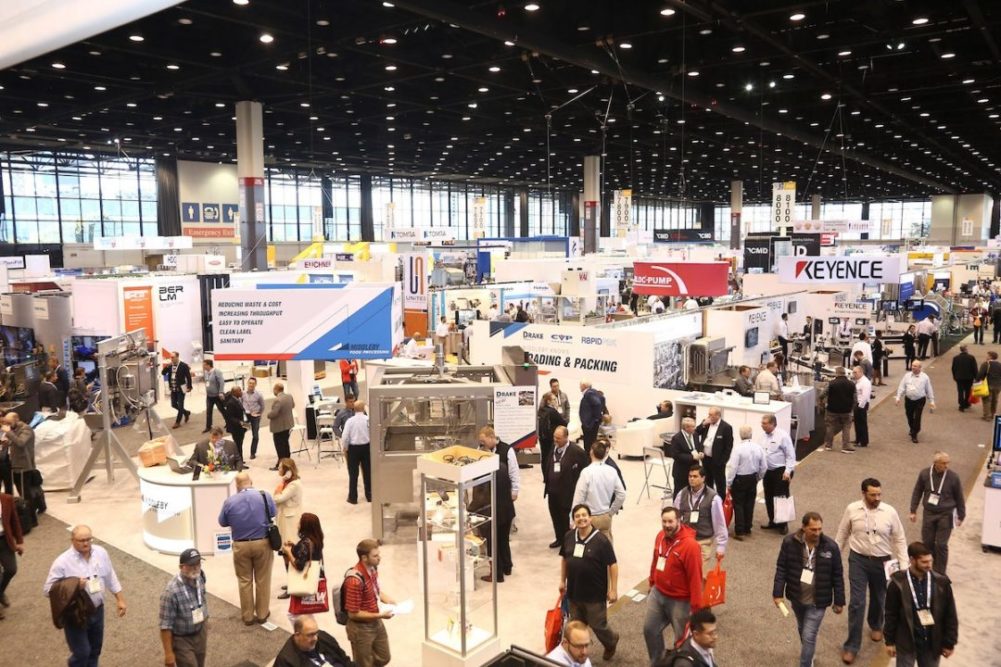LAS VEGAS — The floors of Pack Expo Las Vegas were bustling on opening day and the four showroom floors were packed with exhibitors as PMMI hosted its largest Las Vegas show to date, with 2,300 exhibitors filling up nearly 1 million square feet of exhibition space. The show is being held Sept. 11-13 at the Las Vegas Convention Center.
And the news from PMMI’s State of the Industry report was good as it detailed growth of the last couple of years and in the near future for the packaging and processing industry. Growth was close to 16% in 2021 and more than 12% in 2022, and expansion is expected to continue although at a slower pace.
“Certainly the base of growth is slowing as to be expected,” said Jorge Izquierdo, vice president of market development for PMMI. “It would be unreal to think we would continue to have this level of growth. What’s significant is normally when you have such aggressive growth, there follows a drop. In this case we haven’t seen any drop. When I say a drop, I mean a contraction. What we’re finding is a slowing down. So from double-digit growth in 2021 and 2022, in 2023 we’re expecting a growth of 3% to 4%. In 2024, we’re expecting 1% to 2%.”
A return to normal growth of around 6% is predicted in 2025-26, he added.
After large equipment backlogs due to high demand and supply chain problems the past couple of years, the backlog is easing.
“Economic uncertainty and a high interest rate environment has led to conservative spending behavior by many end-users,” the report said.
Mr. Izquierdo said that the growth in the early part of this year was partly because of back orders being fulfilled. And he was optimistic about the industry, especially compared to others.
“Food and beverage tends to be so much of our business, and it tends to be very robust, very resilient,” he said.
Supply chain problems are getting better, the report said, although there are still some challenges for equipment manufacturers.
“Many suppliers are still finding it difficult to source drive and control systems in Q2 2023, however even this appears to be resolving,” the report said. “Semiconductor suppliers, which are at the core of the control electronic shortage, are beginning to see reduced revenues quarter on quarter. While bad news for semiconductor suppliers, it is good news for those downstream in the supply chain. Reduced revenues indicate softer demand which is allowing equilibrium to return to the supply of semiconductors.”
Raw material prices and component costs have begun to fall, which has stopped large price increases for equipment, the report said. However, higher interest rates have especially affected smaller producers who have had to delay planned investments.
Perhaps one of the biggest challenges continues to be the labor shortage, especially the availability of service technicians.
“Many suppliers are having to re-think strategies regarding hiring and retaining labor,” the report said. “Additionally, many suppliers are leaning on technology like predictive maintenance to help bridge the skill gap. The most successful machine suppliers are adequately supporting programs aimed at attracting, hiring, training and retaining labor while also investing in new technologies which help mitigate labor-related risks to the business.”

